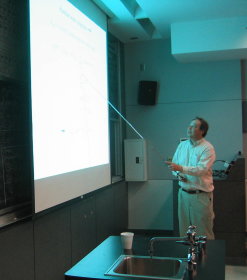So imagine the following:
You’re walking along the street, minding your own business, and somebody walks up to you and tries to sell you a string theory. So you stop and examine the goods, since you’re in the market for string theories, on the lookout for any that might be novel, useful, bright, or shiny, etc. You never know when one or other property might come in useful.
Question: How do you know that it is a string theory? Let me be sure to point out that it comes with a lot of the defining path integral done for you. In other words, you don’t have to do the integral over string world sheet metrics and world sheet fields. This was done in the factory for you. What you have access to are parameters such as the coefficients of the operators in the theory, and you can also adjust the value of the string coupling.
So a lot of the stuff you would recognize as a string theory in your typical string theorist’s notebook have been cleaned up. They’ve been integrated over. The observable physics actually never cared about them (the technical details of summing over metrics – slicing up the moduli space of inequivalent metrics properly at each genus, etc etc…. all done), assuming you’ve done the integrals properly. The factory did it all for you.
So what criteria do you use to decide that it is a string theory at all? Actually, this is not an idle question. Think about the issue in the context of trying to understand some […] Click to continue reading this post →



